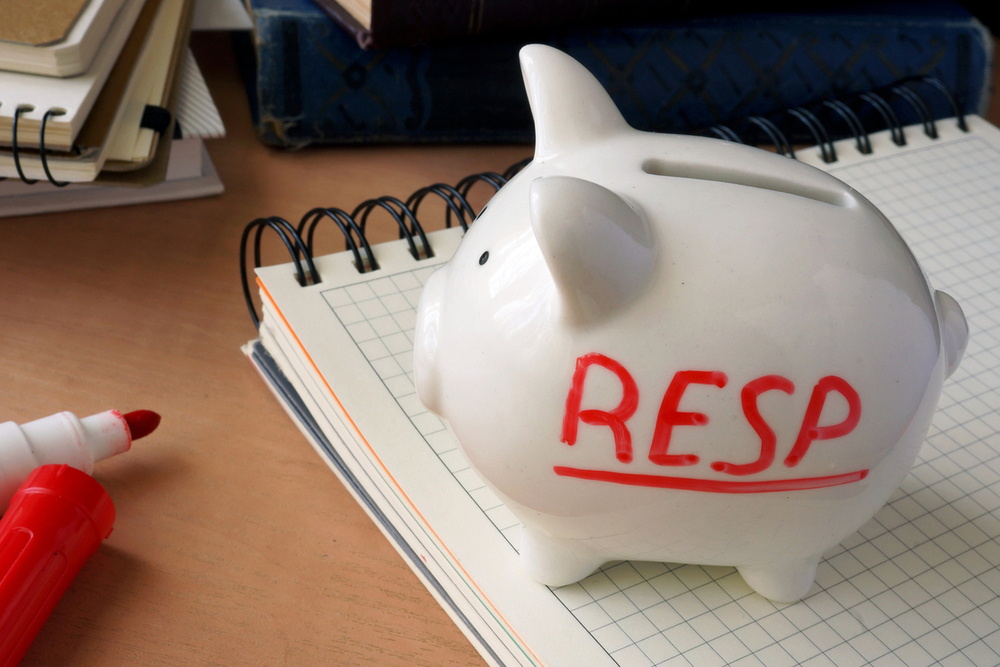The article “The Best Way To Transfer RESP Money To An RRSP” was originally published on MoneySense on January 2, 2018.
Transferring in-kind versus cashing out, plus keep in mind penalties due
Q: When transferring my unused RESP accumulated income into my RRSP, am I able to do it as is, i.e. bank stocks, or do I have to cash them in and transfer as cash?
—Johanna
A: If you end up with money in a Registered Education Savings Plan (RESP) that you can’t use for a child’s education, you can get back your original contributions tax-free.
The remaining Canada Education Savings Grant (CESG) money or Canada Learning Bond (CLB) money is repaid to the government, but that’s money you wouldn’t have had in the first place.
The excess accumulated income in an RESP is taxable upon withdrawal, plus a punitive 20% penalty tax. But as you have noted, Johanna, you can transfer up to $50,000 of this income to a Registered Retirement Savings Plan (RRSP) on a tax-deferred basis. This back-up option is one of the reasons I think an RESP far outshines other education savings options for children – like trust accounts – in addition to the 20%+ government grants.
To make the transfer from your RESP to your RRSP, Johanna, the RESP account must be at least 10 years old, all beneficiaries must be at least 21 years of age and none of the beneficiaries can be currently pursuing post-secondary education.
You also need to have RRSP room to transfer your unused RESP accumulated income into your RRSP. Although you won’t specifically get a tax deduction for the transfer, Johanna, it will help you avoid an income inclusion, so indirectly you will get a tax deduction. And since the tax payable would be at your regular tax rate plus a 20% penalty tax, it would almost always be advisable to make the transfer to your RRSP if possible.
Most Canadians have lots of RRSP room to absorb a transfer from an RESP, but if you don’t, there are things you can do to ensure you do.
If you are contributing to your RRSP currently and are nearly maxed out, slow down your contributions in advance of a transfer.
Or if you are a business owner and can take your compensation as salary instead of dividends to generate more RRSP room, this should be considered.
If you’re in a defined benefit (DB) pension plan, you may not have much RRSP room or generate much new RRSP room each year (perhaps as little as $600 of new RRSP room annually), but do your best to maximize your RRSP room and your eligible RESP transfer.
To clarify, Johanna, there are no capital gains taxes payable within an RESP, so your deferred capital gains on investments like your bank stocks in your RESP are irrelevant. The only tax factors are your original contributions and any government grants, with everything else being taxable as accumulated income on withdrawal.
On this basis, the only benefit to transferring investments in kind (as is) from an RESP to an RRSP are avoiding transaction costs. It saves you having to sell in one account and buy in another, incurring transaction costs like commissions to do so.
Although the Income Tax Act permits in-kind transfers in a case like this, practically speaking, not all financial institutions may permit you to do so as an administrative practice. If they require you to sell and repurchase, Johanna, you could always point out that in-kind transfers are allowed under the Income Tax Act and ask them if they can credit you back for any transaction costs you incur as a result.
Jason Heath is a fee-only, advice-only Certified Financial Planner (CFP) at Objective Financial Partners Inc. in Toronto, Ontario. He does not sell any financial products whatsoever.

